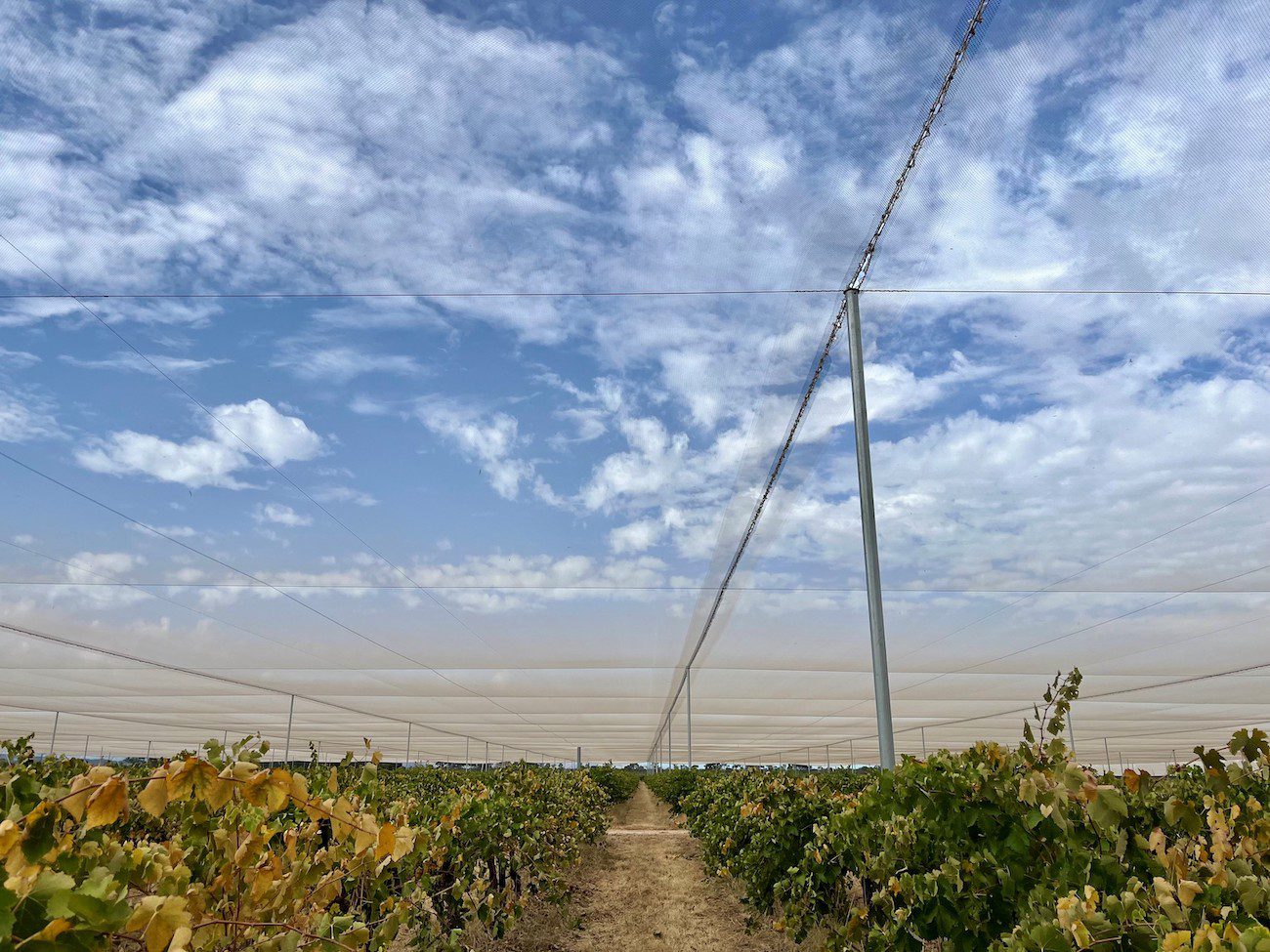
Treasury Wine Estates’ Koonunga Hill vineyard in the Barossa Valley is at the heart of the company’s latest climate adaptation response, with a new enclosed nylon vineyard canopy protecting the 14-hectare planting of luxury grapes.
Planted in 2008, the vineyard consistently produces luxury Shiraz and Cabernet Sauvignon grapes for some of Penfolds‘ best-known wines: Grange, Bin 707, St Henri Shiraz and RWT Bin 798 Barossa Valley Shiraz.
TWE has implemented a number of adaptation strategies to help prepare and respond to a changing climate including long-range weather forecasting, smart irrigation and water recycling.
For the first time this growing season, it also includes the vineyard canopy at Koonunga Hill that’s inspired by the success of similar canopies used in citrus horticulture.
The $1 million infrastructure investment is the wine producer’s latest innovation to adapt its viticulture practices to suit changing environmental conditions and mitigate the predicted temperature increases and extreme weather events that are expected to create drier conditions in the Barossa Valley by the middle of this century.
TWE’s director of wine and grape sourcing, Anthony Catanzariti said “The Koonunga Hill canopy is a significant investment in climate adaptation in one of Australia’s most significant growing regions, the Barossa Valley.
“As a key sourcing region for some of our best-known luxury Shiraz and Cabernet wines, having the right viticultural practices to farm to the changing conditions will shore up the supply of high-quality grapes for years to come.”

Hills around the Koonunga Hill site create an ampitheatre, with cold air drainage making the area prone to frost and intensifying the impact of the hot northern wind.
The canopy offers a greater level of protection from these effects, helping create a more stable environment that reduces stress on the vines, less bird and hail damage, and reduced watering requirements.
TWE technical viticulturist Marcos Bonada said water consumption in vintage 2024 was almost a third lower for vines under the canopy.
“In a higher-risk water catchment area like the Barossa Valley, creating conditions where vines producing luxury grapes can thrive with less water is a significant step forward in our sustainability efforts,” Marcos said.
“Investing in adaptations like canopies to improve vine and fruit quality in a changing climate will help protect the region’s international reputation for full-bodied red wines.”
While the experiment is still in its early phase, grapes harvested in the 2024 vintage in recent weeks have delivered promising results, with earlier ripening and vibrant, more intense colour on the fruit harvested under the canopy compared with the vineyards outside the canopy.
The increasing use of technology to analyse real-time data on growing conditions features inside and outside the canopy at Koonunga Hill, and across a number of TWE’s global vineyards.
Solar-powered measuring equipment for surface temperature, rainfall, wind speed and direction, transpiration, moisture at various soil depths, canopy stress, and bunch weights, provide real-time comparisons of growing conditions.
Main photo: Anthony Catanzariti.
Related content













Recent Comments